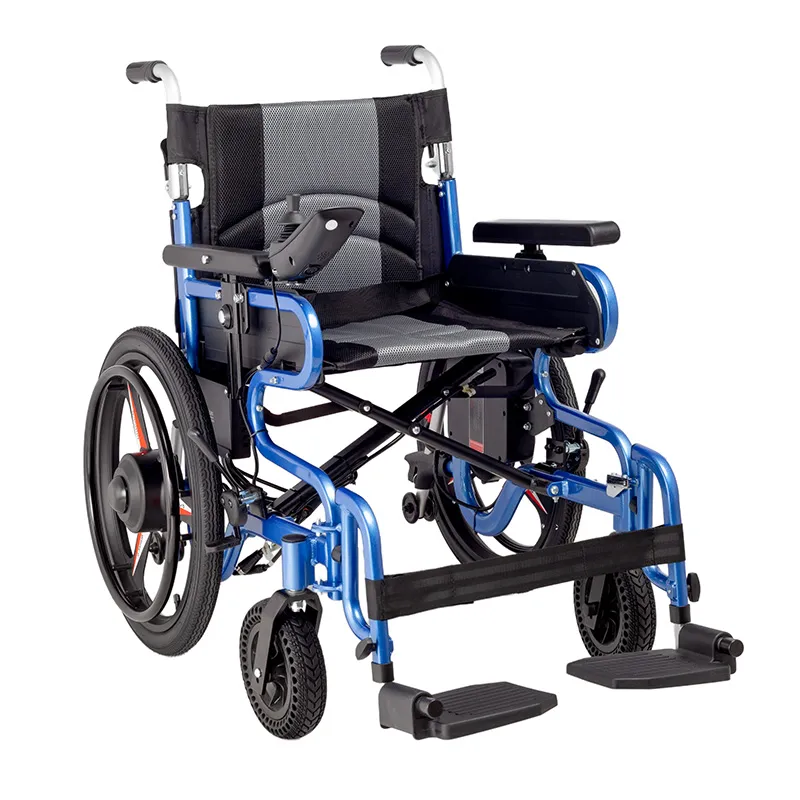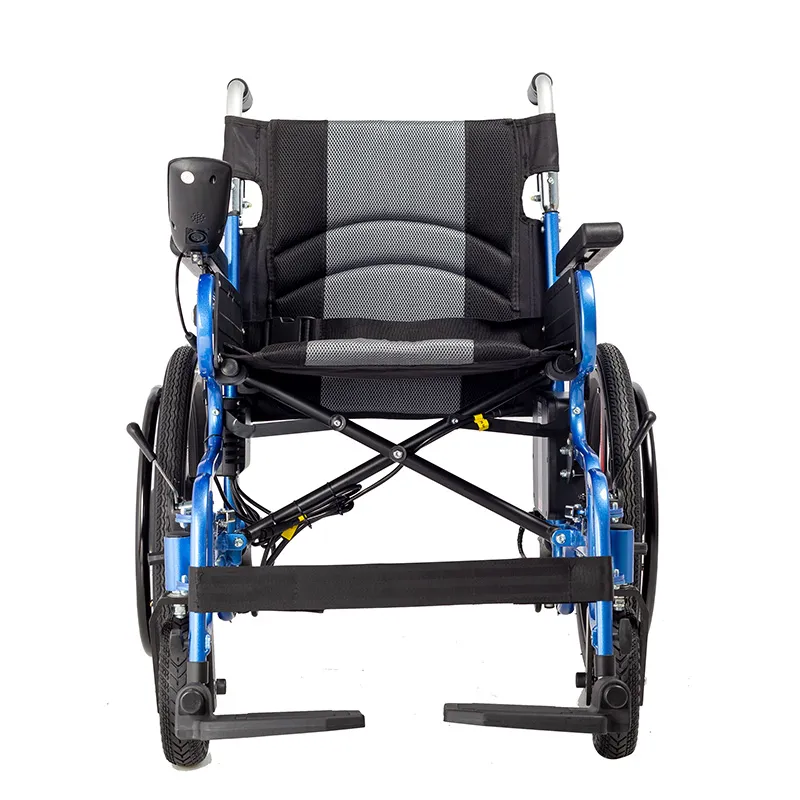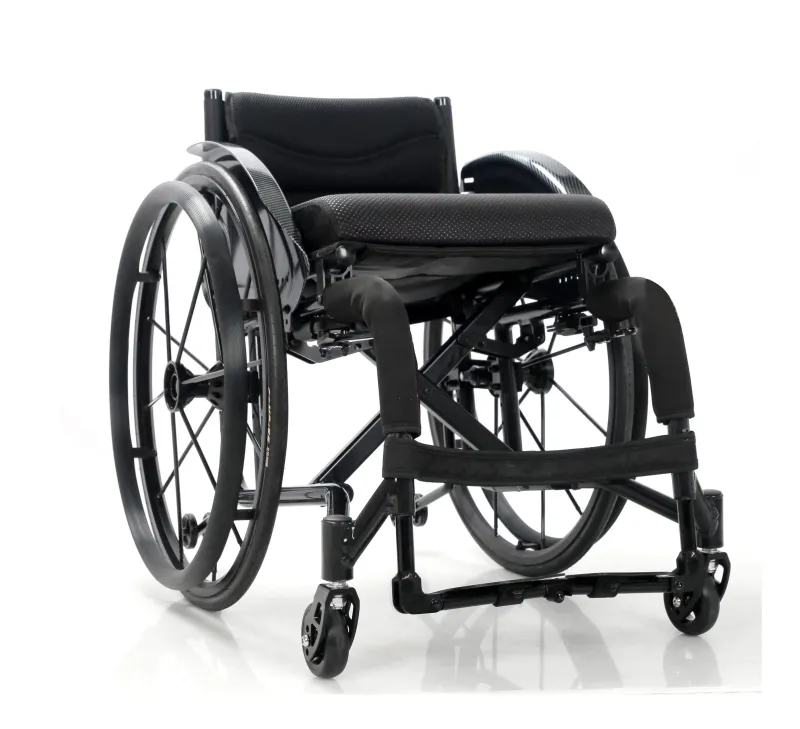
Will the legs of people who sit in manual or electric wheelchairs become stiff?
2024-11-18 15:30
For many people, wheelchairs are an indispensable tool in daily life, helping them overcome mobility problems. However, whether long-term dependence on wheelchairs will cause problems in certain parts of the body, especially whether the legs will become stiff, has sparked many discussions. Wheelchair users also face many difficulties in their lives, not only physical challenges, but also psychological and social problems.
This article will explore in detail whether long-term sitting in a manual or electric wheelchair will make the legs stiff, and the most difficult things wheelchair users face in daily life.

Will the legs of people who sit in manual or electric wheelchairs become stiff?
Long-term sitting in a wheelchair may indeed have a certain impact on the body, especially the lower limbs, but whether the problem will lead to "stiff legs" depends on multiple factors, including the user's health status, frequency of wheelchair use, daily care, etc.
Possibility of muscle atrophy and joint stiffness
There are some common physical changes among people who rely on wheelchairs for a long time. The first is muscle atrophy, especially the muscles in the legs. Due to long-term lack of activity and exercise, the leg muscles of wheelchair users may gradually lose strength and elasticity, leading to muscle atrophy. Muscle atrophy is a phenomenon in which muscle mass is reduced due to lack of exercise. This not only weakens leg strength, but can also lead to changes in posture and other deterioration of body functions.
Secondly, joint stiffness is also a common problem for long-term wheelchair users. Due to the lack of sufficient leg exercise, wheelchair users may have reduced joint flexibility, especially in the knees, hips and other parts that are often in a bent position. This continuous posture prevents the joints from moving freely like normal people, resulting in reduced joint mobility and increased stiffness.
However, the phenomenon of "leg stiffness" is not experienced by all wheelchair users, and the degree varies. The health of the muscles and joints of the lower limbs is closely related to whether the user can receive regular physical therapy or other forms of activity. Many wheelchair users will maintain muscle and joint flexibility through specific physical therapy and exercise to minimize the negative effects of inactivity.
Blood circulation problems
Another issue that needs attention is the blood circulation disorders that may be caused by long-term sitting. Because wheelchair users are in a static state for a long time, blood circulation, especially blood flow in the legs, may slow down. Poor blood circulation can easily lead to problems such as edema of the legs and varicose veins, and in severe cases, it may also cause complications such as thrombosis. These problems can also make the legs feel stiff, heavy, and uncomfortable.
To cope with this, wheelchair users can take some preventive measures in their daily lives, such as regularly elevating their legs, performing leg massages, or wearing medical elastic stockings to help improve blood circulation and relieve the discomfort caused.
Measures to prevent and relieve leg stiffness
Although wheelchair users may develop stiffness in their legs or muscle atrophy, there are many measures that can effectively prevent and relieve these problems.
● Regular passive exercise: Although wheelchair users cannot actively move their legs, they can perform some passive exercises with the help of a caregiver or physical therapist. These exercises can help maintain joint mobility and prevent stiffness. In addition, some rehabilitation training equipment can also help wheelchair users perform exercises that simulate walking, thereby maintaining blood circulation and muscle activity in the lower limbs.
● Massage and physical therapy: Regular leg massage can help stimulate blood flow, reduce joint stiffness, and relieve the pressure caused by long periods of sitting. Physical therapists can also help wheelchair users maintain joint flexibility and prevent leg stiffness through professional physical therapy.
● Use assistive devices: Some wheelchair designs also include special leg supports to help users maintain correct leg posture and reduce stiffness caused by long-term sitting. Using these tools can effectively prevent leg problems in long-term wheelchair users.

What is the most difficult thing for wheelchair users?
In addition to the physical problems they may face, wheelchair users face many difficulties in their daily lives. These difficulties not only involve physical challenges, but also psychological, emotional and social adaptation. The following are some of the most difficult problems commonly faced by wheelchair users.
Balance between independence and dependence
For many wheelchair users, one of the biggest challenges is how to find a balance between living independently and relying on others for help. Most people want to remain independent and do not want to rely entirely on family, friends or caregivers to complete daily activities. However, wheelchair users may have physical limitations in certain aspects that require them to rely on others, especially when performing complex or more physically demanding tasks, such as going up and down stairs, moving objects or traveling.
This dependence often makes wheelchair users feel frustrated or powerless, especially when they want to complete certain tasks independently but cannot do so. Therefore, how to accept necessary help while maintaining self-esteem and independence is a psychological challenge that many wheelchair users must face.
Lack of barrier-free environment
Although modern society pays more and more attention to the construction of barrier-free facilities, there are still many obstacles that wheelchair users cannot pass smoothly. Barrier-free design is crucial for wheelchair users, as it determines whether a person can move freely in society and participate in various activities.
However, although some public places have facilities such as wheelchair ramps, elevators and barrier-free toilets, there are still many buildings, transportation and streets that do not fully take into account the needs of wheelchair users. For example, narrow door frames, high steps, buildings without elevators, etc. will cause huge obstacles for wheelchair users. This not only limits their freedom of travel, but also affects their social life and work opportunities.
Psychological pressure and social prejudice
People who use wheelchairs often face psychological pressure, especially when they realize that they cannot participate in social activities like ordinary people. This psychological pressure comes not only from physical limitations, but also from social misunderstandings and prejudices.
Although modern society is gradually becoming more inclusive to people with disabilities, wheelchair users still encounter some potential discrimination and misunderstanding. For example, some people may think that wheelchair users are not qualified for certain jobs, or regard them as a group that needs special attention and care. These misconceptions and prejudices can take a toll on wheelchair users’ self-esteem and increase their psychological stress.
In addition, wheelchair users may also experience a sense of isolation, especially if they find it difficult to participate in normal social activities with friends or family. This social isolation can further increase the psychological burden and make them face more challenges in terms of mental health.
Ongoing management of physical health
In addition to problems with stiff legs or muscle atrophy, wheelchair users must pay special attention to other aspects of their bodies, such as avoiding the development of pressure sores (also known as bedsores). Because wheelchair users sit for long periods of time, pressure is concentrated in certain areas, and skin and tissue may be damaged due to poor blood circulation, forming pressure sores. This condition is not only painful, but may also lead to more serious health problems.
To avoid pressure sores, wheelchair users need to adjust their sitting posture regularly, use anti-pressure sore cushions, and receive professional care. Long-term management of physical health is an ongoing challenge for wheelchair users, requiring both time and effort, as well as professional care support.
Get the right wheelchair and accessories
Choosing the right wheelchair is crucial to the user's quality of life. However, getting the right wheelchair is not easy. Different physical conditions, living needs and economic conditions may affect the choice of wheelchair. Some high-end wheelchairs or specially designed wheelchairs are expensive and many people cannot afford them. At the same time, customized services, maintenance and upkeep of wheelchairs also require additional costs and efforts.
In addition, wheelchair users may also need various auxiliary accessories, such as anti-pressure sore cushions, back support devices and leg support tools, which will also increase the user's financial burden and difficulty in choosing.









